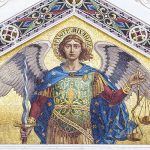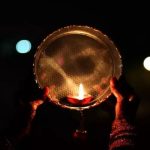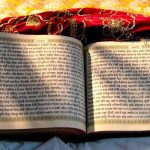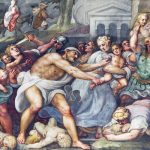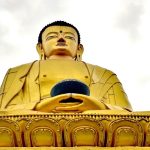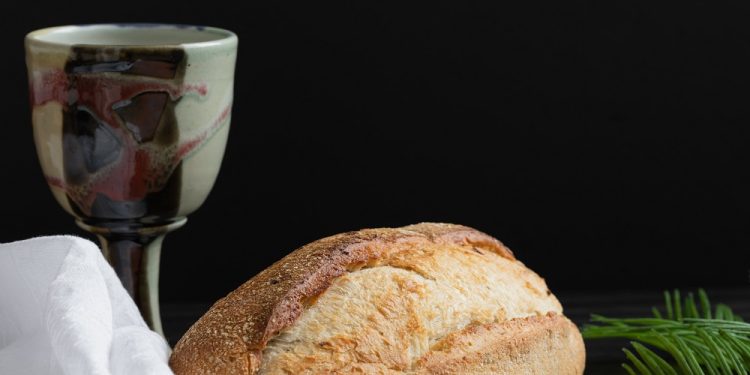
Maundy Thursday
Established to commemorate the Last Supper of Jesus Christ with his Apostles, as well as the Christian ritual of the Washing of the Feet, Maundy Thursday is a religious holy day observed by Christians all over the world. This day is observed the day before Good Friday and is known by a wide variety of different names, including Holy Thursday, Great Thursday, Thursday of Mysteries, Covenant Thursday, and Sheer Thursday.
This day is observed in different ways by different Christian denominations, but there are some elements that are shared among many groups. During this day’s mass, a foot-washing (or Maundy) ceremony is performed at some point during the service.
Special communion services are also held on this day. And for many congregations, a special meal is eaten. In parts of the United Kingdom, alms are distributed to senior citizens by a British monarch or royal official, and this is known as Royal Maundy.
Maundy Thursday is observed on the fifth day of Holy Week, sandwiched between Holy Wednesday and Good Friday. The term “Maundy” comes from the Latin word for commandment, “Mandatum.” This reflects Jesus’ words “A new commandment I give unto you,” which he spoke to the Apostles after washing their feet at the Last Supper.
Maundy Thursday Religious Services
Maundy Thursday is a holy day that initiates the Paschal Triduum, the three days that commemorate the passion, death, and eventual resurrection of Jesus Christ. It’s a day observed in different ways by different religious denominations and in different countries. Below are just some of the ways this holiday is observed.
Western Christianity
In Western Christianity, most Christian denominations observe this day through the celebration of the sacrament of Holy Communion. The Washing of the Feet is also practiced on this day among many different Christian groups.
It’s practiced in the Anglican Church, the Episcopal Church, the Presbyterian Church, the Roman Catholic Church, the Armenian Apostolic Church, the Ethiopian Orthodox Tewahedo Church, the Lutheran Church, the Methodist Church, and in the Mennonite Church. And that’s only a small overview of the many different denominations in which the Washing of the Feet rite is performed.
In some Anglican and Catholic churches, the Mass of the Lord’s Supper begins, but the Gloria is then accompanied by the ringing of the church bells. After this initial pealing, the church bells will then remain silent until the Easter Vigil. After the homily, the Washing of the Feet may be performed.
The Chrism Mass
In Anglican, Lutheran, and Roman Catholic churches, the Chrism Mass is celebrated in each diocese. This is usually held on Maundy Thursday morning, but some dioceses move it to another day during Holy Week. This mass is a celebration of the priesthood and is one of the biggest annual gatherings of the faithful and clergy in most dioceses.
This Mass is called the Chrism Mass because it takes its name from the blessing of the holy oils used in the sacraments throughout the year. The most common holy oil is Chrism, which is used not only to dedicate churches and consecrate altars but also during Baptism, Confirmation, and Holy Orders. The Oil of Catechumens is another holy oil used during the sacrament of Baptism.
The final holy oil is the Oil of the Sick. This oil is used during the rite of the Anointing of the Sick. While the Oil of the Catechumens and the Oil of the Sick are simply blessed, the Sacred Chrism is consecrated. The Oil of the Catechumens will be used for Holy Saturday at the Easter Vigil, and for the confirmation and baptism of those entering the church.
Eastern Christianity
In the Eastern Orthodox Church, the primary service of this day is a service of evening prayers known as Vespers, combined with the Liturgy of St. Basil the Great. When it’s necessary to replenish the stores of the reserved sacrament, an additional liturgical Lamb is consecrated on this day, covered, and then left until Holy Saturday. On Holy Saturday, it will be divided and the pieces placed in the tabernacle.
On this day in monasteries and cathedrals, the Washing of the Feet is performed. Chrism may also be consecrated on this day, performed by the heads of the various churches. After a colorful Liturgy, the vestments and hangings are changed to a dark color such as black. This signifies the beginning of the Passion. The Holy Passion service of the reading of the 12 Gospels is also performed.
How People Celebrate Maundy Thursday Around The World
Of course, Maundy Thursday isn’t just observed through religious services. People also observe this holiday in a number of other ways as well. While activities such as the Washing of the Feet are quite common all over the world, some practices aren’t so common.
A common way that some Catholics observe this holiday is by preparing and eating a Passover Seder that has been customized for their faith. This meal emphasizes the Christian significance of the elements found in a traditional Jewish Passover Meal as it may have been celebrated during the time that Christ lived. This meal isn’t a religious service nor is it a reenactment of the Last Supper. It’s merely a way to help young children understand the historic origins of their faith.
Another practice that is common among many different Christian denominations, but primarily Catholic denominations, is a spring cleaning of the home. This is very much like the Jewish custom of ritually cleaning the home before the Feast of Passover. Everything is cleaned in preparation for the Easter celebration. It’s also common in Eastern Slavic cultures to do a spring cleaning known as Clean Thursday.
Royal Maundy is a religious service held in the Church of England on this day. During the service, the royal official or British monarch will give out small silver coins known as “Queen’s Maundy Money” or simply “Maundy Money” to the elderly. These are symbolic alms. The coins are legal tender, but they don’t circulate because of their numismatic value and the amount of silver contained within them.
In Slovakia and the Czech Republic, this day is called Zelený štvrtok. From this day, known as Green Thursday because of the use of fresh vegetables during a typical meal, the church bells aren’t rung until Holy Saturday. In some regions, the church bells are replaced by groups of children walking around the church with wooden rattles. This announces to the people the coming of the liturgical hour and to call them to the church.
In Kerala, a state on the southwestern Malabar Coast of India, Maundy Thursday is known as Pesaha. This is a Malayalam word that comes from the Aramaic word for Passover. By the Government of Kerala, both Maundy Thursday and Good Friday are observed as public holidays across the state.
This is due to the large number of Syrian Christians that live in the area. The tradition of consuming a Passover unleavened bread known as Pesaha appam is customary after the longer observation of the Holy Qurbana. On Maundy Thursday, unleavened bread is made at home using unleavened flour and a drink called Pesaha Paal.
This drink is made of jaggery and coconut milk. On Pesaha night, the bread is steamed in a vessel. The bread is cut and shared among the family after prayers. Some families will make a dip of coconut milk and jaggery.
In Sweden, Maundy Thursday is celebrated a little bit differently. It’s called Skärtorsdagen in Swedish, a name that is derived from the Old Norse word “Skira,” meaning clean. This is not unlike other Roman-Catholic traditions of cleaning the home before Good Friday. That isn’t what sets this holiday celebration apart from others.
What sets it apart is the belief that this is the day when witches flew off on broomsticks to the legendary island of Blåkulla to dance and feast with the devil. The rationale behind this belief was that Maundy Thursday was the day that Jesus was betrayed by Judas—an act so evil that it unleashed the forces of chaos on the earth.
While it’s common for Swedish children to dress up as witches on this day and go door to door to beg for candy or Easter eggs, this holiday wasn’t always the carefree holiday it is today. During the witch trials of the 17th century, three hundred people were executed as witches. These people were accused of stealing children and bringing them to the devil at Blåkulla. In June of 1675, 71 people were burned at the stake.
In the Philippines, the holiday is known as Huwebes Santo. This is a phonetic transliteration of Jueves Santo in Spanish. Jueves Santo means Holy Thursday in Spanish. During this day, most businesses are closed and shopping malls don’t open until Black Saturday. Newspapers don’t generally publish on Good Friday or Black Saturday, and many TV and radio stations have shortened hours of operation.
In Bulgaria, Maundy Thursday is called Veliki Chetvurtuk—which means Great Thursday. This is a day when people clean their homes and perform other household chores to get ready for Crucifixion Friday—a day that’s known as Razpeti Patek. It’s also a day on which people color their Easter eggs.


